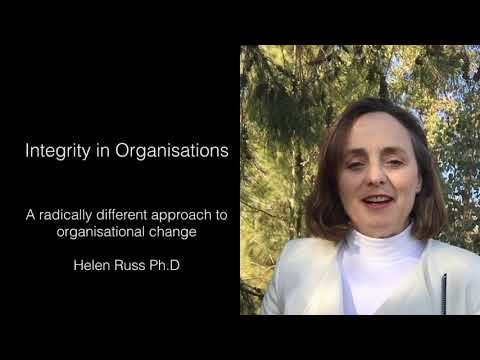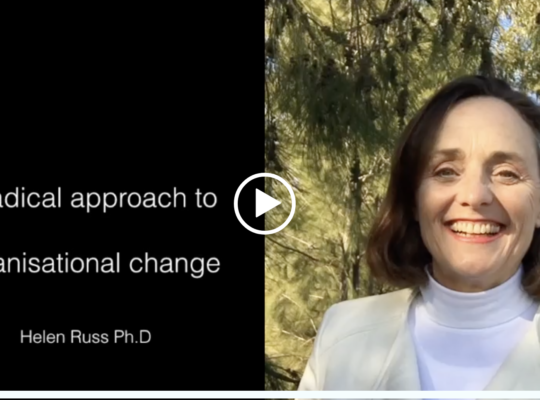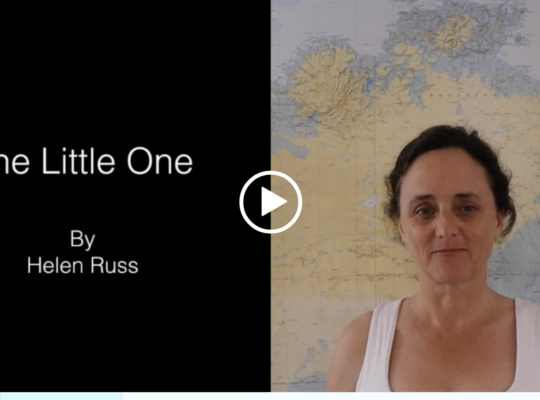Activating the inherent goodness in groups? A radically different approach to organisational change, this work is about finding and awakening the inherent goodness embedded within our organisations.
A bit of background or context.
I believe that all life forms have the propensity to move towards the inherent good, embedded in their nature.
I also believe that groups are one of the most powerful forces on the planet, if not humanities most powerful force. You only have to look at the response to Covid 19, across all levels of government, across all countries, all levels of community.
Groups do incredible things. Literally we overcome the limitations of matter, in that we can send each other round the world, we can send our thoughts round the world in a second. In groups, we heal each other, we educate, we feed each other.
But when they go dark, it can be catastrophic.
Think of mass genocide, mass pollution or the impact of riots.
When greed and fear drive organisations it can be devastating for hundreds of thousands of people, let alone the planet on which we live.
What is of interest here,
Under the influence of a group, individuals will do things they never normally even attempt while they are on their own, both for positive and negative results.
What is it within an individual that allows them to remain true to themselves even amidst the influence of powerful cultural, or economic forces?
What is it within an organisational context that allows it to remain true to itself?
A bit of a foundation
According to Plato and many other teachers, physical reality emerges as a multiplicity of emanations from the one immutable source. We all emerged from the one Life. Which means the life flowing through you is me in a different form.
Also according to Plato, for anything to exist, somewhere there is a perfect essence of that form. He said, for a horse to exist, somewhere there is a perfect essence of horse-ness.
The archetype is a perfect Form, it’s the blueprint, within which everything is contained as a non-dimensional potentiality.
Described as the Lex. in Latin which means the lore, law and dharma which is an Indian word meaning the right way or the righteous way of living.
Lex in ancient Greek means the Word.
In Ancient Rome, Lex was used in the context of Lex Romanos, meaning the law of Rome, and Lex Moses, meaning the Law of Moses.
In this context, the Lex is the law of groups, it is the living blueprint.
The lexion is that which gathers in its name, the beliefs, norms, organisational systems
The lexion is the spirit of the group. It is what makes organisational culture.
Connecting to the Archetype
If one can connect themselves or someone else to their archetype, to their perfect essence, that person will remember who they really are, they will remember their true nature and the beauty and harmony that is within them. When they connect with their perfect essence their delusion and dysfunction will drop away.
Essentially that’s what spiritual work is about. Spiritual teachers down the ages, across all traditions have essentially been trying to connect people to their perfect essence. Spiritual work is about getting in touch with the part of us that is divine.
Can we do this for groups?
This work rests on a principle that any form that is aligned with its true nature lives in a harmonious flow with all other life.
What I am presenting here uses meditation based techniques along with more conventional organisational research techniques to connect staff within the organisation to its perfect essence, to the joy love and enthusiasm that is the archetype of the group.
It’s about doing it consciously.
I’m sure you’ve had a moment in your life when someone maybe someone you lived, saw in the depths of your soul. When you felt really seen and you remembered the good, the inherent good that is within you.
It’s the same for groups
One of the greatest failures in organisational change processes is that we fail to recognise the spirit of the group is a being in its own right, it is consciousness with its own desires, fears and agendas, its own psychological makeup, even its own particular style for how it gets things done.
Experiences
I remember working with an organisation whose field staff had a kind of golden glow on their skins that made clients feel like there was something a little magical associated with their work.
Another Peace and Reconciliation organisation opened a kind of Colosseum of light that allowed the healing work to happen naturally.
What is the spirit of a group?
Whenever people gather, they gather round an idea, around a Lex. Be it for a rock and roll concert, for work, on a train or kids in a kindergarten.
Whenever people gather, the spiritual essence of each individual is also present. The spirit of the group is the ‘something more’ that emerges through this gathering. Think of the beach, it is more than a collection of individual grains of sand that make it up.
Less than about 25 people and the group spirit is affected by the emotional stability of the key players or founders. Above about 25 and the group spirit will remain in form even if the key players leave or major roles are adjusted.
Flavour of consciousness
We recognise the spirit of organisations intuitively through their flavour of consciousness. Think of Qantas Airlines, verses Lufthansa Airlines, South West Airlines in American or American Airlines. Each of these organisations carry out essentially the same function, but each of them has a slightly different mental flavour. One might be more heavy or light, more open or closed, more aspirational or depressed. If you can recognise that MacDonald’s feels different to Burger King, you have a begun to recognise the spirit of these organisations.
While its true to a degree that the CEO is the person who tells you what to do within an organisation, in reality, most of your learning of corporate behaviour, dress codes, organisational systems comes intuitively from the spirit of the group.
While in the presence of a group our thoughts, beliefs, and actions, even what we believe is possible is shaped by the spirit of the group.
The CEO does shape the spirit of the group to some degree. But the collective thoughts and values are what drives it. If, for example, the CEO, the board or a group of people are only interested in their own financial gain, every act or thought they perform while working for the organisations will imprint the lexion with those qualities and these qualities will be reflected back to colleagues, customers and clients alike, no matter how beautifully crafted is the organisational mission statement or statement of ethics. Likewise, if people in the organisation are inspired, enthusiastic and full of fun, the group spirit will reflect those qualities.
In groups, we live in the psychological soup of our own collective making.
Higher mode and lower mode
The spirit of the group exists weather we are consciously aware of it or not. If we ignore it, it will operate in the background, usually in lower mode.
Every life form has the opportunity to operate in higher or lower mode. Higher mode is when we are achieving things full of life your heart is aligned with what you are doing and is happy and you are moving forward.
Lower mode is when we are full of bureaucracy, corruption or dysfunction. We might be working towards the same goal on our corporate mission statements, but in truth we are lost in a maelstrom of over complication, self interest and ineffective systems.
It’s my experience that when people or groups are behaving badly it is because they have the imprints of traumas, manipulation or abuse, clouding access to their true nature. You could think of it like layers of coloured glass, too many layers and you can’t see through to the light, let alone your true nature.
Gravity and Attention
Living on earth, in the physical, gravity is what keeps us in place.
For the spirit of a groups attention is what keeps them in place. Attention is the focusing force. Meaning the more attention focused on a particular Lex the more powerful it becomes.
The interesting thing is that it does not matter if the attention is positive or negative. The spirit of the group is ‘fed’ by actions, thoughts or intent directed towards it.
The spirit of a group is like us. We want to have relationships with other life forms, it wants to have a relationship with the people in your organisation, it wants to have a relationship with you.
For us and for groups when we’re ignored we often behave badly
Why do groups need us?
The I Am and the We Are
We have a higher self, an eternal spirit. Groups don’t. It’s the part of us that gives us the ability to recognise truth over falsity, and love over flattery, You could describe it as our personal individuality. The ‘I Am’. This ‘I Am’ is the thing that gives us the ability to remain true to ourselves.
The spirit of a groups don’t have this. Remember it wants attention, it needs attention to survive.
On its own a lexion doesn’t have a moral compass.
A lexion is imprint-able. Their consciousness has some form and structure, but they are created and imprinted by mental and emotional intensity in multiple forms.
Every time you use Google, you contribute to the spirit of Google.
For both positive and negative results, lexions are imprinted by:
Acts of will committed in their name.
By thoughts, emotions of members or clients
By powerful individuals
By the landscape of lexions, the psychological landscape it exists within,
By national or global trends, social and cultural mores, intense cultural events.
Given sufficient size (without guidance, from you or one or two people within your organisation) the spirit of your group will be seduced by emotional intensity.
It is the I Am, in us that allows us to consciously connect between the ideal organisation and the operational organisation. Every time we connect the principles of the Lex are imprinted within the lexion. As individuals align with the Lex, they align their will with its principles and their thoughts and actions imprint the spirit of the organisation with these qualities.
In essence it is only through our caring, our heart centred wilful action that organisation remain aligned with their perfection.
Organisations need our wilful heart centred intent to remain connected to their inherent goodness.
In summary
The spirit of groups is a living being, consciousness gathered in name of a particular ideal, a particular Lex.
It is continuously shaped and imprinted by the most intense thoughts and emotions of its members and of its time.
Integrity in organisations is when the spirit of the group is aligned with its ideal.
This alignment is present when the people with the organisation retain the psychological connection between the level of operations and the level of the Lex.
This connection is made easier when organisational members have an active, open and conscious relationship with the spirit of the group.
What I am bringing is not new.
For centuries corporate wizards, revolutionaries, religious leaders, kings and queens have understood how to work with the spirit of groups.
Think of the army general he has one hundred thousand people under his command. They have been fighting for months. He can feel in the spirit of the group that they are exhausted but he needs them to fight one last battle. What does he do? He may make a speech, but they probably can’t all hear him, he may walk among them, he may move people around in positions, but in essence, what makes a great leader over an ordinary one, is that he will work with the spirit of the people. He may find an essence of victory or life in the spirit of the group and he will amplify it. Essentially, it’s the space of consciousness he holds and his ability to work with the subtle consciousness of the group that makes the difference.
A language and a technology
Instead of having one charismatic general, or one corporate wizard, whose role is to keep the organisation aligned. This work brings a language and a structure so all people actively participate.
It’s making what has been an intuitive process (a hidden act in consciousness) overt.
While there are corporate wizards who can lift an organisation out of the gutter through their intuitive genius, many organisational change processes use techniques that work with the analytical mind, descriptions and feeling levels. In-depth interviews, organisational cultural matrixes, team building, storytelling and questionnaires for example. Many will give people new experiences, shift departments around, change categories and hire and fire in an attempt to bring life to the organisation.
These conventional techniques are akin to trying to change the artwork at the level of the artwork, without communicating with the artist.
What I am presenting adds a completely new dimension. It uses meditation based techniques to work with a completely different level of consciousness.
It works with the spirit that makes what we’d describe as culture and it forges mental pathways between the operational level of the organisation and the level of the Lex, or perfect Form.
Experiences
When Ive introduced the language and technology to organisations there is an awakening, for both the lexion and for people who are part of it. There is a natural cleaning up for old dysfunction and an alignment with the higher purpose, a heart felt recognition of the essence of the organisation. Its’ an experience.
In a worksop with an emergency service organisation I remember someone saying,
‘thats who we are, now I know who we are’. They’d gained a heartfelt a sense of direction by experiencing the organisational Lex.
I was working with a Sight organisation in California. For 30 years they had been doing cataract surgery (Sight) all round the world and working with Native American health at home. The dual mission had created an internal schism within the lexion which staff repeatedly told us about during interviews. When we started to work with the spirit of the group we discovered pillars (psychological connection pathways) between the level of the Lex and the operational level of the organisation. There was four pillars and one of those pillars was filled with static.
At the next board meeting (I wasn’t present) the board made a decision (after 30 years of operation) to change the native American Health program, to a program dealing with Native American sight. After 30 years, there was integration across all programs. The internal schism staff spoke about resolved itself.
That is the power of this technique. When things are really seen into the depths of their being, they have a natural tendency to return to their true nature. To their inherent goodness.They return to a state where they are living in a harmonious flow with other life forms.
Who is this work for?
It’s not for everybody. It’s not for you if;
you believe that the physical world is all that exists
you’re happy with the status quo
you are not really that invested in your organisation
It maybe be for you if:
you’d like to learn how to support your organisation to hold itself, in a way that is more aligned with its highest ideal.
you’d like to reveal the inherent joy and enthusiasm in your organisation.
you’d like reduce the level of complication and dysfunction
you also need to be high enough to bring it to the whole group.
you’re willing to take a risk, as it will reveal things that have been hidden and bring different flows to the organisation.
It is very different approach to organisational change.
But if you tune into the spirit of your organisation, you will get a sense if it wants to find out more about me.
Collectively we create the spirit of our organisations, what is in our heart is what shapes them.
If you’d like to hear more give me a call, we will have a no expenses chat and see if we are a good fit.
My experience is that this process has power to create a harmonious and successful organisation, one that I believe you’d like to be part of.
I appreciate your time, I hope to connect again.
For more Getting to Better Together a podcast with Richard Bawden and Helen Russ discussing the Magic of Group Consciousness.
Helen Russ Ph.D
+61 (0) 44 77 one two three one zero
Copyright Helen Russ







